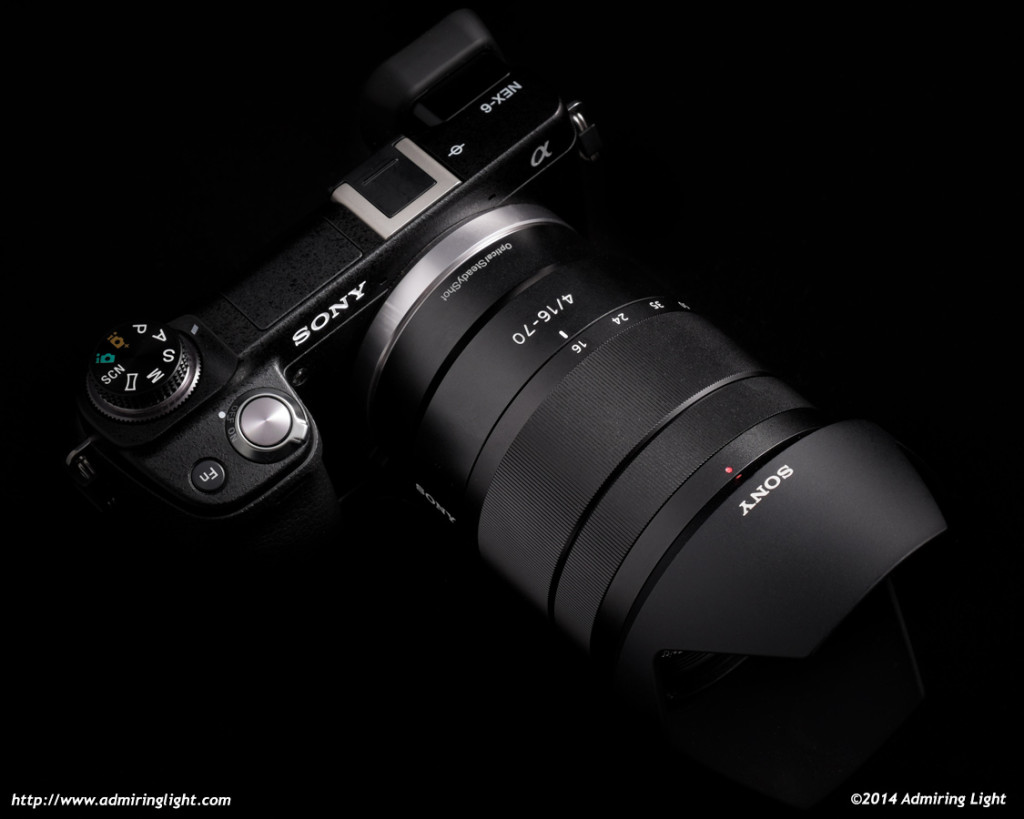Image Quality

Sharpness
Carl Zeiss lenses are renowned for their image sharpness, high contrast and rich color. On the sharpness front, the 16-70mm f/4 falls a little short of expectations, though still puts in a solid performance. Images show good central sharpness throughout the zoom range right from f/4. Image borders and corners are a little soft at the widest aperture. Stopping down brings the central part of the frame into outstanding territory and the image borders to a very good level, though the extreme corners lag a bit and never really get sharp. That last remaining softness is of minimal concern in daily use, though it does limit the lens’ usefulness as a landscape optic for those who are picky about cross-frame sharpness.
To get an idea of how the lens performs, click on the image to the right, then click on the green arrow at the bottom of the screen to view a large version of the image.
Bokeh
With a maximum aperture of f/4, there’s not a tremendous amount of blur that can be created throughout most of the range, though the lens is capable of providing some subject separation at the longer end of the zoom range, and provides plenty at 70mm when shooting tighter portraits or closer objects. Given the relatively close minimum focus distance of 13 inches, the lens does a good job for closeup photography, though it falls far short of a macro lens.
The 16-70mm produces quite pleasing bokeh for a standard zoom lens, with smooth gradations and very even and smooth specular highlights. The quality of the bokeh doesn’t vary much over the focal range, maintaining good smoothness at any zoom setting and both close up and at further focus distances. Overall, this is a very impressive performance in a standard zoom.

Color, Contrast and Chromatic Aberration
Typical of most Zeiss lenses, the 16-70mm provides ample image contrast and very pleasing, rich color response. There’s just a little something extra that ‘pops’ a bit with this lens
The lens isn’t perfect with regards to chromatic aberration, but I found it not to be particularly noticeable in everyday shooting. Longitudinal CA can be present in out of focus areas under the right circumstances, but even there, it’s relatively well controlled. The minor lateral CA can be taken care of with a simple click in RAW development programs such as Lightroom.
Distortion, Vignetting and Flare
The 16-70mm features a fairly typical distortion profile for a standard zoom lens. There is some barrel distortion at the wide end (which can be quite visible at 16mm when shooting architectural subjects), and a bit of pincushion distortion at the long end. These distortions are corrected in-camera if you shoot JPEG, and Lightroom contains a profile that will also correct them automatically if you so desire.
The 16-70mm f/4 shows some visible corner shading at wide apertures, and even a small amount of residual vignetting when stopped down, though neither are particularly objectionable.
With regards to flare, I unfortunately did not get a chance to test the lens against bright light. The first day I had the lens, we had plenty of sun, but I was simply intent on getting to know the lens at that point. Later in the week, we had a series of overcast days that precluded shooting into the sun, so a thorough evaluation of flare couldn’t be performed.






Leave a Reply